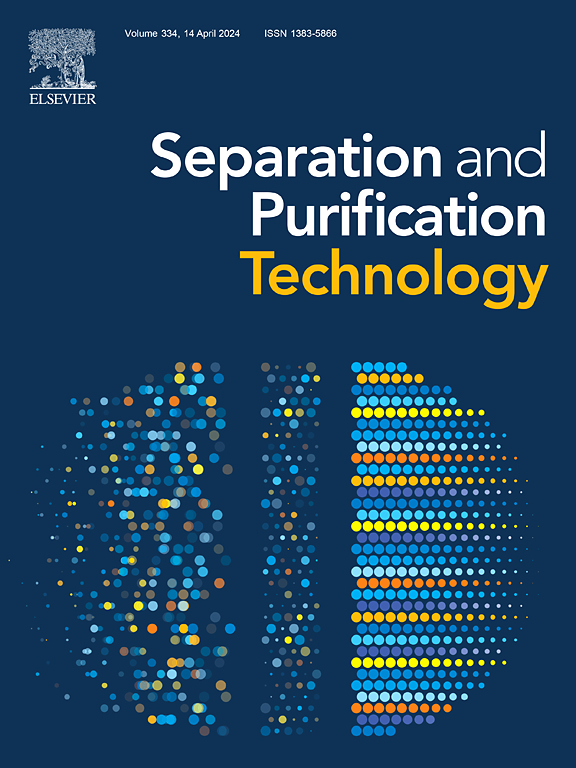使用铜-钴双金属改性泡沫镍阴极对新出现的污染物进行电-芬顿降解:金属表面结构和单线态氧的作用
IF 8.1
1区 工程技术
Q1 ENGINEERING, CHEMICAL
引用次数: 0
摘要
本文章由计算机程序翻译,如有差异,请以英文原文为准。


Electro-Fenton degradation of emerging contaminants using Cu-Co bimetallic-modified nickel foam cathodes: The role of metal surface structure and singlet oxygen
Antibiotic contamination in water presents a substantial threat to both the ecosystem and public health, whereas the electro-Fenton (EF) process is acknowledged as an effective method for removing refractory organics from wastewater. Based on this, we propose a multiphase EF process that utilizes coral-like Cu-Co bimetallic hydroxide (CuCoOOH) and oxide (CuCo2O4) modified nickel foam (NF) electrodes as cathodic materials, thereby facilitating simultaneous oxygen diffusion and the in-situ generation and activation of H2O2. It has been demonstrated that the EF process with CuCo2O4-modified cathodes effectively degraded tetracycline (TC) under low energy consumption conditions ([Na2SO4]0 = 10.0 mM, [Current density]0 = 5.0 mA/cm2), achieving a removal efficiency of 96.7 %. However, the removal efficiency of the CuCoOOH-modified cathode EF process for TC (10 mg/L) was only 78.2 %. Furthermore, the CuCo2O4/NF/EF system demonstrates superior environmental tolerance and electrode repeatability. Electron paramagnetic resonance and quenching experiments demonstrated that ·OH, ·O2–, and 1O2 participated in the oxidation process in both EF processes, with 1O2 identified as the primary contributor to the oxidation of TC. In-situ Raman spectroscopy and density functional theory reveal the relationship between the Cu-Co bimetallic configuration and the in-situ generation trends and formation free energy of H2O2. Differences in the degradation intermediates, pathways, and toxicity evolution of TC in two EF processes were identified using LC-MS. It is ultimately emphasized that the CuCo2O4-modified NF cathode EF process is more cost-effective and detoxifying, while the cathode exhibits dual Fenton-like activity, ensuring sustained and efficient wastewater treatment.
求助全文
通过发布文献求助,成功后即可免费获取论文全文。
去求助
来源期刊

Separation and Purification Technology
工程技术-工程:化工
CiteScore
14.00
自引率
12.80%
发文量
2347
审稿时长
43 days
期刊介绍:
Separation and Purification Technology is a premier journal committed to sharing innovative methods for separation and purification in chemical and environmental engineering, encompassing both homogeneous solutions and heterogeneous mixtures. Our scope includes the separation and/or purification of liquids, vapors, and gases, as well as carbon capture and separation techniques. However, it's important to note that methods solely intended for analytical purposes are not within the scope of the journal. Additionally, disciplines such as soil science, polymer science, and metallurgy fall outside the purview of Separation and Purification Technology. Join us in advancing the field of separation and purification methods for sustainable solutions in chemical and environmental engineering.
 求助内容:
求助内容: 应助结果提醒方式:
应助结果提醒方式:


